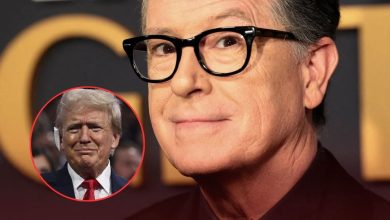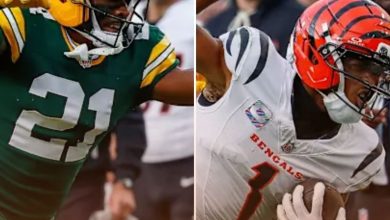Baltimore Orioles’ 2025-2026 Offseason Wish List: Moves That Could Redefine the Franchise .MH
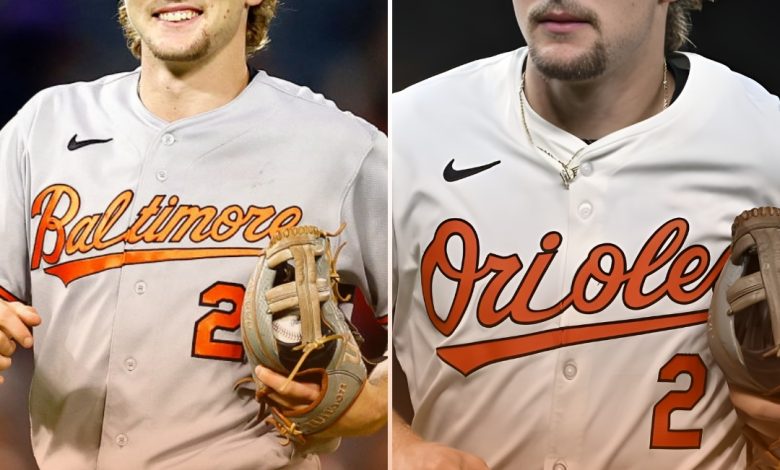
The Baltimore Orioles will be one of Major League Baseball’s most compelling teams this offseason.

The organization is already flush with young, controllable talent offensively. Star shortstop Gunnar Henderson is under contract through 2028, top catching prospect Samuel Basallo was given an eight-year deal to buy out arbitration, and many of their other top draft picks have realized their major league dreams.
For president of baseball operations Mike Elias this offseason is a pivotal one for his job security. The Orioles finished with over 100 losses in the first two 162-game seasons under his watch, while he committed to a tank. Then, the team earned a winning record in each year from 2022-2024, including a division title in 2023 and two playoff appearances.
In 2025, that young talent that Elias had amassed was contributing at the major league level. Despite their efforts, Baltimore finished in last place – largely due to a pitching staff that finished 26th in the league in ERA.
As a result of this regression, manager Brandon Hyde was fired in May. The Orioles’ new manager, Craig Albernaz, hopes to get the team back on track.
Baltimore has been consistently towards the bottom of the league in payroll under Elias. The organization’s young core players needed time to assert themselves in the big leagues, so Elias’ limited spending was largely on the margins of the roster.
The Orioles were likely deterred from being big spenders in most offseasons since Elias took over due to ownership turmoil as well. Longtime owner Peter Angelos had given his son, John, ownership of the team in 2018 due to poor health. John never showed interest in investing meaningfully into a roster that was stripped down to the studs.
In 2024, a group led by billionaire David Rubenstein purchased the Orioles from the Angelos family. When Rubenstein’s group took full control of the organization, he said that they were “firmly committed to this team and to [his] hometown.”
“As an ownership group, we are firmly committed to this team and to my hometown. Our ownership group comprises a group of world-class investors, Baltimore leaders and sports legends who are committed to the success of the Orioles and the revitalization of Baltimore.” – David Rubenstein (August 1, 2024)
The 2024-25 offseason was Rubenstein’s first as owner, and the team increased payroll. However, that increase did not correlate with team success.
Outfielder Tyler O’Neill (54 G, -0.3 fWAR) was given a three-year, $49.5 million contract and was largely unavailable. Starting pitchers Charlie Morton and Tomoyuki Sugano were each signed to one-year deals north of $10 million but combined for just 0.4 fWAR.
The team’s best free agent signing ended up being outfielder Ramón Laureano, who signed a one-year deal worth $4 million and was later traded.
This Orioles team has the offensive talent to be a force, but to win, they need greater investment from Rubenstein. The O’s desperately need pitchers that can be difference-makers.
We haven’t seen Baltimore dish out a nine-figure deal since they inked Chris Davis in 2017. But now, under new ownership, it’s time for this front office to put together a winner.
This is what they need to do.
Acquire a Top-of-the-Rotation Starter
The depth of the Orioles’ starting rotation was already thin entering this offseason. Trading former top prospect Grayson Rodriguez to the Los Angeles Angels only furthered their need for impact pitching.
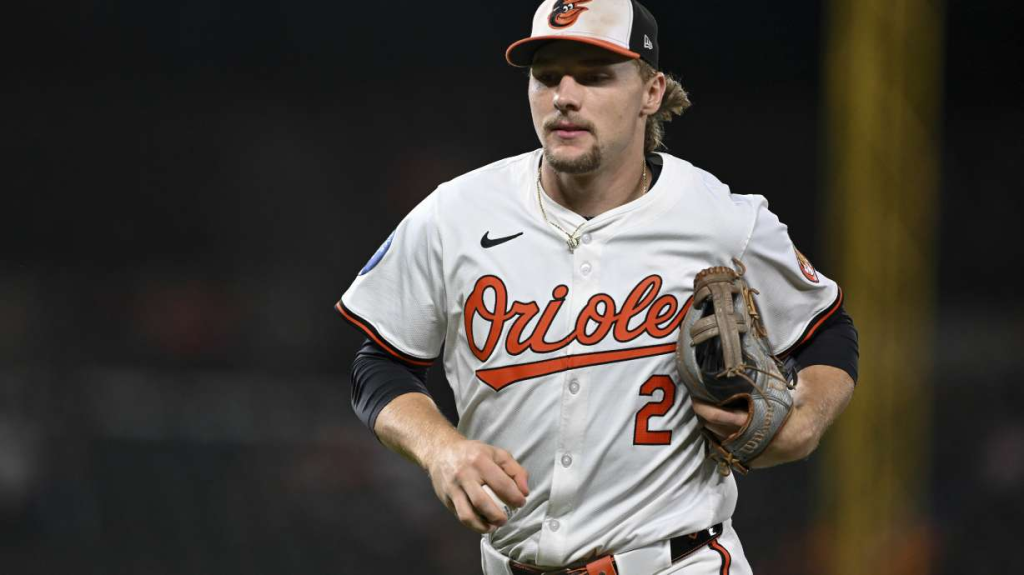
Trading Rodriguez won’t take away from the paltry numbers that this staff produced last season. The former first-rounder hadn’t pitched in an Oriole uniform since July 31, 2024, due to lat and elbow injuries. Before he was dealt, it was believed that he could bounce back and meaningfully contribute in 2026. That option is now off the table.
For more thoughts on the Rodriguez-to-Angels trade, read here or check out this episode of the Just Baseball Show.
Baltimore has two clear top starting pitchers that all teams in Major League Baseball would covet: Kyle Bradish and Trevor Rogers. Neither of them, however, can be trusted to be a workhorse staff ace, like Corbin Burnes was in 2024.
Bradish pitched to a 2.83 ERA over 168.2 innings in 2023 but missed the majority of the past two seasons due to a torn UCL. Upon his return late in the 2025 season, Bradish struck out 37.3% of batters he faced in 32 innings. It’s clear that Bradish has the talent to be a frontline starter on a good team, but he will likely be limited in some capacity this coming season as part of his recovery.
As for Rogers, he began the 2025 season at Triple-A, where he threw 29.2 innings with a 5.46 ERA. What followed his promotion back to the majors can be described as nothing short of a miracle.
He threw 109.1 major league innings with a 1.81 ERA, functioning as Baltimore’s staff ace. His 3.64 xFIP doesn’t indicate that he’s a Cy Young favorite next season, but Rogers was an effective starter down the stretch. He will be firmly entrenched in a role with the Orioles in a contract year in 2026.
As of right now, the rest of the bunch will be some assortment of Dean Kremer, Cade Povich, Tyler Wells, and Brandon Young. The Orioles have some intriguing prospects in the upper minor leagues, but they are unlikely to crack the Opening Day roster. This team badly needs one, if not more, starters from outside of the organization.
Free Agent Targets: Dylan Cease, Framber Valdez, Michael King, Ranger Suárez
The Orioles should be shopping at the top of the free agent market for starting pitching this offseason. Whether they land one of these premier pitchers is less certain, but they need someone who can make an impact.
Bradish and Rogers figure to be two good pitchers, but who is starting other hypothetical playoff games right now, Dean Kremer and Cade Povich? We saw Kremer pitch in the 2023 ALDS, and he was lit up by the eventual champion Texas Rangers.
Any of these arms would be a welcome addition and represent an unparalleled pitching investment in recent Orioles history. The largest total value that an Orioles pitcher has signed for is Ubaldo Jiménez, who was given a four-year, $50 million deal in 2014.
Valdez may be of particular interest to Elias, who was an assistant general manager for the Houston Astros while Valdez was a developing young player. The southpaw appeared in multiple World Series during his Astros tenure, so that experience may be of additional value to a team that has struggled in the postseason.
Trade Targets: Joe Ryan, Pablo López, Freddy Peralta, MacKenzie Gore
The extent to which these arms are available is not known, but each would represent an upgrade to the Orioles’ present staff.
Given that the Twins held on to Ryan and López during their trade deadline sell-off this past year, it would likely take a lot for Minnesota to part with them now. The Orioles could offer young talent, like Coby Mayo or Dylan Beavers, if they are feeling aggressive.
Peralta is coming off of a fantastic season in Milwaukee and is on a cheap $8 million contract next year. Since he would be a rental, Baltimore could strike up another deal with the Brewers like they did with Burnes.
Gore may not have the same allure as those mentioned previously but would still represent a major improvement.
Fill Out the Back End of the Bullpen
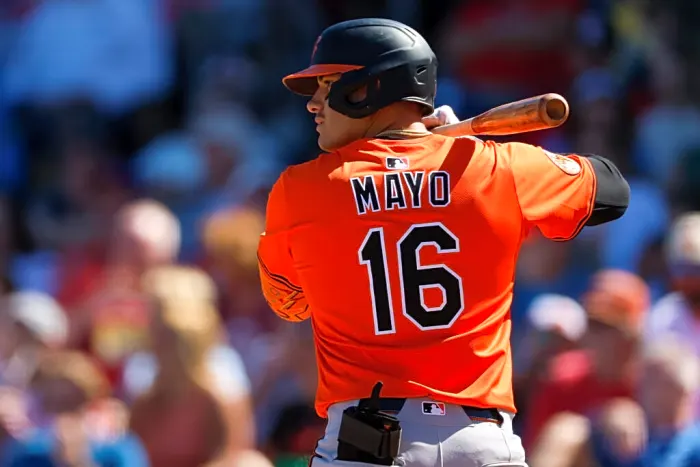
Before the trade deadline, Elias moved every reliever for whom he could garner a worthwhile return. When the dust settled, Bryan Baker, Seranthony Domínguez, Andrew Kittredge, and Gregory Soto had all been shipped out of town.
On top of that, closer Félix Bautista, who had just returned from Tommy John surgery, underwent surgery to repair a torn labrum and torn rotator cuff as the 2025 season came to a close. He is going to miss most, if not all, of 2026.
Baltimore has already gotten to work on repairing this gutted bullpen, re-acquiring Kittredge from the Chicago Cubs. He’s the most proven reliever that the O’s have currently, but if this team has any intention of competing, they’ll need two or more additional relievers of his caliber or better.
As for the other pieces likely to be in the mix this season, left-hander Keegan Akin is the most prominent. He is a free agent following 2026, so he will be pitching for a new deal.
Yennier Cano, a 2023 All-Star, is still in the mix, but who knows what to expect following his abysmal 2025 campaign. Cano posted a 5.12 ERA in 58 innings and will need to earn the trust of Albernaz.
The Orioles signed southpaw Dietrich Enns to a one-year, $2.5 million deal with a $3.5 million club option for 2027 after he filled in admirably post-deadline. Enns pitched to a 3.14 ERA in 28.2 innings over the final two months.
Kade Strowd and Rico Garcia both contributed to the Orioles’ post-trade deadline ‘pen as well and will vie for roster spots in spring training.
Free Agent Targets: Robert Suarez, Pete Fairbanks, Ryan Helsley, Seranthony Domínguez
I have a tough time believing that the Orioles will be shopping in the Edwin Díaz market, especially if they sign an impact starting pitcher, so these options seem a bit more realistic.
Suarez, Fairbanks, and Helsley all have extensive experience in the closer role. They each have their red flags: Suarez is 34, Fairbanks is injury-prone, and Helsley imploded upon his trade to the Mets, but they all throw hard. Each of these right-handers would begin the season as the team’s closer on Opening Day.
A reunion with Domínguez would also make sense, preferably if he is the set-up man. Domínguez performed well as an Oriole last season, but surely, they’d feel more comfortable with an established closer.
Trade Targets: Bryan Abreu, Dennis Santana, JoJo Romero
Each of these relievers has pitched in high-leverage and closing roles before and will be a free agent following the 2026 season. They may not be available this offseason, but they would represent upgrades to the Orioles’ bullpen.
Clear the Position Player Logjam via Trade
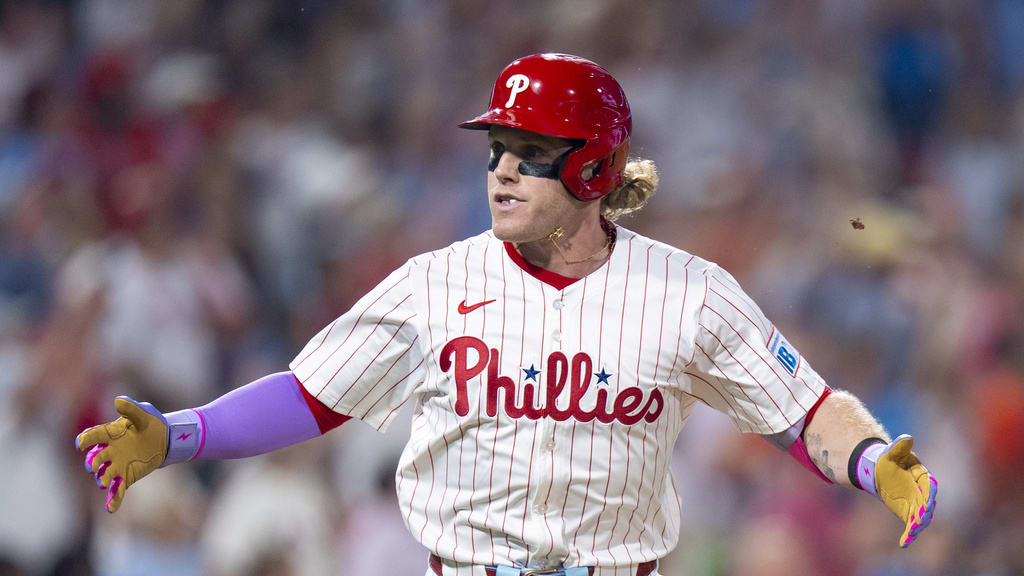
Elias has accumulated a great deal of young talent offensively and supplemented that talent with veteran bats. The issue is that the roles for some of these young players, particularly those that play first base and outfield, are unclear.
First Base
At first base, the Orioles have Coby Mayo and Ryan Mountcastle as right-handed hitting options. Basallo, a lefty, also figures to factor into the mix when he isn’t catching. There doesn’t seem to be much of a purpose to rostering two right-handed, first base-only players, so why not make a move?
Mayo is a former top prospect who has struggled for most of his 340 major league plate appearances but finished strong in 2025. In September, Mayo hit for a .941 OPS with five home runs, signaling that he may be figuring things out.
Mountcastle (357 PA, 81 wRC+ in 2025) had the worst offensive season of his career last year. To the surprise of some, he was tendered a contract for 2026, which will be his final season before hitting free agency.
The emergence of Mayo led many to believe that the Orioles would dump Mountcastle, but that didn’t happen. How the Orioles will manage the playing time of these two right-handers will be worth keeping an eye on.
Mountcastle’s 75.2 mph average bat speed is reason for optimism, but his game comes with an extreme swing-and-miss approach. Playing him means taking crucial developmental at-bats away from Mayo, possibly stunting his growth as a hitter. Best practice would be making a decision on whether Mayo is the franchise’s first baseman of the future.
If the Orioles have any doubts, Mayo, a former top prospect, still holds a great deal of trade value. They could use him as a centerpiece in a deal for an impact arm, then deploy a combination of Mountcastle and Basallo at first or sign another player. Either way, giving both of these players limited at-bats figures to devalue both of them.
Corner Outfield
When the Orioles surprisingly decided to deal Rodriguez, they acquired outfielder Taylor Ward, who hit 36 home runs for the Angels last season. He is certain to occupy one of the two corner outfield spots on Opening Day.
As for the other corner outfield spot, it would appear that O’Neill and rookie Dylan Beavers will be battling for the lion’s share of playing time.
Beavers, a lefty, has the platoon advantage and performed well late in the season (137 PA, .775 OPS). He is a young player with options, and O’Neill is a veteran making guaranteed money, so it’s not impossible that Beavers draws the short end of the stick and has to open 2026 back in Norfolk.
Given that the club already gave outfielder Leody Taveras a one-year, $2 million major league deal, Taveras represents additional competition for Beavers. Taveras figures to provide Baltimore insurance in center field for Colton Cowser, but he could also carve out a bench role as a defensive replacement.
Elias would likely prefer Taveras to take the role of bench outfielder, so Beavers could still get every day at-bats and be prepared for an eventual injury.
Another projected option who can play outfield is utilityman Jeremiah Jackson, who had basically never played outfield in the minor leagues but played a good deal of right field down the stretch last year. He is likely to earn a roster spot and could be an emergency outfield substitute as well, which could lessen the need for Beavers.
The difficulty with benching or sending down Beavers is that he looks promising, is 24, and ranks on many top 100 prospects lists. He makes the Orioles better than Taveras, or possibly even O’Neill, does. But this Ward trade certainly adds a wrinkle to his projected playing time, and he could be a possible trade chip as well.
Heston Kjerstad did not play baseball for the entirety of the second half of the season due to a non-baseball-related condition. Expectations for Kjerstad in 2026 are similar to his trade value: next to nothing.
Moving Beavers, a young, controllable outfield piece, would sting. However, the Orioles have taken a liking to drafting outfielders with their first-round picks, so perhaps others will assert themselves into the mix by 2027.
Adding to the Team Post-Potential Mayo/Beavers Trade
There’s not much of a point in waiting around for guys like Mayo and Beavers and maintaining a low payroll if the team is just going to acquire veterans to play over them.
Blocking young players like Mayo and Beavers hurts their development, which can damage their trade value. But just because Mountcastle and O’Neill can compete with these young players for playing time, doesn’t make them great options, themselves.
If the Orioles decide to capitalize on the trade value of Mayo and/or Beavers and bring in a pitcher, then they can’t be content with the depth that they have here, offensively.
The pitching staff was detrimental to the team’s success in 2025, but it’s been the offense that has let them down in the playoffs. If Mayo is moved, bringing in a power-hitting first baseman to play over Mountcastle would be optimal for the team’s success. If Beavers is moved, acquiring a veteran, left-handed hitting outfielder would allow for matchup flexibility.
The Orioles appear to be priming themselves for a competitive 2026 season and don’t have the pitchers to be American League frontrunners, currently. They will have to be bold, and that might mean trading young players that could make an impact down the road.
If Rubenstein is committed to increasing payroll and Elias is on board with going for it in 2026, then trading Mayo and/or Beavers may be the best way to get those arms that the team needs.
Final Thoughts
These options that I’ve presented here are aggressive, expensive, and probably a bit bullish. The Orioles haven’t spent anywhere close to this aggressively in decades.
However, if Baltimore’s leadership isn’t thinking big this offseason, then they aren’t thinking at all. This team has proven to have the talent to win 90 or more games in the regular season and needs a few more impact players to legitimize their chances of making a run.
Why would Rubenstein get involved with owning an MLB team to begin with, if he wasn’t willing to use his extensive funds to make this team a winner?


